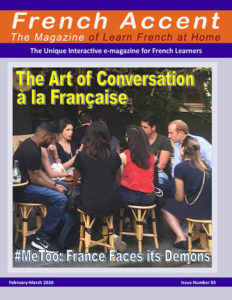No matter how long one studies French, the definite and indefinite articles seem to be a challenge for all. Even though they can be directly translated from English to French, there are situations where these articles are not used in quite the same way.
As a general rule, in French, there is almost always an article in front of a noun. Unlike English, where you can get away with going from the verb to the noun without “the,” “a” or “an.” For example, you can say in English: “I eat escargots when I’m in France” but in French you must add an article in front of escargots so you will have to say “I eat some escargots” (Je mange des escargots).
The French definite articles
The French definite article corresponds to “the” in English. There are 4 forms of these articles depending if the noun is feminine, masculine, plural or if it starts with a vowel or a mute h:
—le is the masculine singular;
—la is the feminine singular;
—l’ goes in front of a noun that starts with a vowel or mute h ;
—les is the plural for both masculine and feminine.
Examples:
Le chien = the male dog.
La femme = the woman.
La table = the table (feminine word).
Les gens = the people.
L’hélicoptère = the helicopter
The French indefinite articles
The singular indefinite articles in French correspond to “a,” “an,” in English, while the plural corresponds to “some.” There are 3 forms of these articles depending if the noun is feminine, masculine, plural:
—un is the masculine singular;
—une is the feminine singular;
—des is the plural for both masculine and feminine.
Examples:
Un arbre = a tree (masculine word).
Une étudiante = a female student.
Une chaise = a chair (feminine word).
Des enfants = children.



 A weekly French lesson by email!
A weekly French lesson by email! Receive our French Learning e-Magazine for FREE!
Receive our French Learning e-Magazine for FREE!